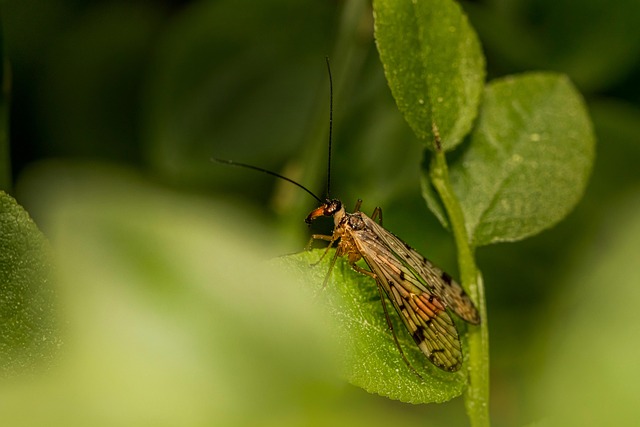Boxelder bugs (Boisea trivittata) are a common pest with a distinct life cycle, from egg laying in spring to adult activity in late summer and early fall. To prevent and manage infestations, seal entry points, use insecticidal soaps or oils, and employ light traps during peak periods. Regular inspections, keeping the home clean, and using natural repellents like essential oils offer effective DIY extermination methods for boxelder bugs without harsh chemicals.
Tired of dealing with boxelder bugs in your home? This comprehensive guide offers DIY solutions for controlling infestations. Learn about these pests’ understanding behavior and life cycle, explore prevention methods, and discover natural remedies. We also provide safe and effective extermination techniques tailored for your DIY needs, empowering you to reclaim your space from these intruders using eco-friendly methods. Say goodbye to boxelder bugs once and for all!
Understanding Boxelder Bugs: Behavior and Life Cycle
Boxelder bugs, scientifically known as Boisea trivittata, are a common pest in many regions, particularly during their swarming season. Understanding their behavior and life cycle is crucial for effective boxelder bug extermination. These insects go through four stages of development—egg, nymph, adult, and alate (wing-developed). In the spring, female boxelder bugs lay eggs on tree bark or under eaves of buildings, giving rise to nymphs that emerge within a few weeks.
Nymphs undergo several molts before reaching the adult stage, during which they develop wings. Adult boxelder bugs live for about one year and are most active in late summer and early fall. They are attracted to light and often gather on windowsills and exterior walls, preparing for swarming. Knowing this behavior allows homeowners to implement targeted DIY solutions for boxelder bug extermination, focusing on sealing entry points, using insecticidal soaps or oils, and employing light traps during peak activity periods.
DIY Prevention Methods for Boxelder Bug Infestations
To prevent a boxelder bug infestation, start by sealing any gaps or cracks in your home’s exterior, especially around windows and doors. These insects are drawn to light, so ensuring your home is well-insulated and sealed can significantly reduce their entry points. Consider using weatherstripping or caulk to fill any openings. Additionally, keep your home clean and free of debris, as boxelder bugs are attracted to organic matter and plant materials. Regularly vacuum and sweep, especially in areas with high vegetation.
Regular inspections are another vital DIY prevention method. Check your home during the summer and early fall when these bugs are most active. Look for any signs of an infestation, such as small holes in fabrics or evidence of feeding on plants indoors. If you spot any boxelder bugs, take immediate action to eradicate them using natural repellents like essential oils (e.g., citronella or lavender) or insecticidal soap. This proactive approach can help keep infestations at bay and make boxelder bug extermination more manageable if needed.
Natural Remedies for Eliminating Boxelder Bugs
Boxelder bugs, despite their name, aren’t actually insects but are in the stink bug family. They can be a nuisance due to their rapid population growth and ability to infiltrate homes during the colder months. Fortunately, there are several natural remedies that offer effective boxelder bug extermination without resorting to harsh chemicals. One of the simplest methods is to use essential oils like neem, peppermint, or citrus oils. These scents act as repellents, driving the bugs away from treated areas. Another organic approach involves creating a mixture of water and dish soap, which can be sprayed directly on the insects to suffocate them.
Plants and spices also play a significant role in boxelder bug control. For instance, peppermint, lemongrass, and cloves have been shown to deter these pests naturally. Setting out sachets or infusions of these scents around entry points like windows and doors can help keep the bugs at bay. Additionally, maintaining a clean home, sealing cracks, and removing potential hiding spots like woodpiles can significantly reduce their population.
Safe and Effective DIY Boxelder Bug Extermination Techniques
Boxelder bugs can be a nuisance, but there are several safe and effective DIY techniques to manage and exterminate them. One popular method is using essential oils like neem oil or peppermint oil. These natural repellents disrupt the bug’s growth cycle and behavior by interfering with their nervous system. Dilute the essential oils in water and spray it directly onto affected areas, such as windowsills, doorframes, and tree branches.
Another DIY solution involves creating a physical barrier to prevent boxelder bugs from entering your home. Seal cracks, gaps, and entry points around windows, doors, and other openings with caulk or weatherstripping. This simple step can significantly reduce their ability to find shelter and breed inside your property. Additionally, keeping your home clean and free of clutter provides fewer hiding spots for these insects, making it easier to control and manage infestations over time.
Controlling boxelder bug infestations can be accomplished through a combination of prevention, natural remedies, and safe DIY techniques. By understanding the behavior and life cycle of these pests, you can effectively navigate their presence. DIY methods offer an eco-friendly alternative to chemical treatments, allowing for personalized solutions tailored to your specific needs. Remember that proactive measures, such as sealing entry points and maintaining a clean environment, significantly reduce the risk of future infestations. With dedication and the right tools, you can successfully manage boxelder bug extermination and create a pest-free living space.
